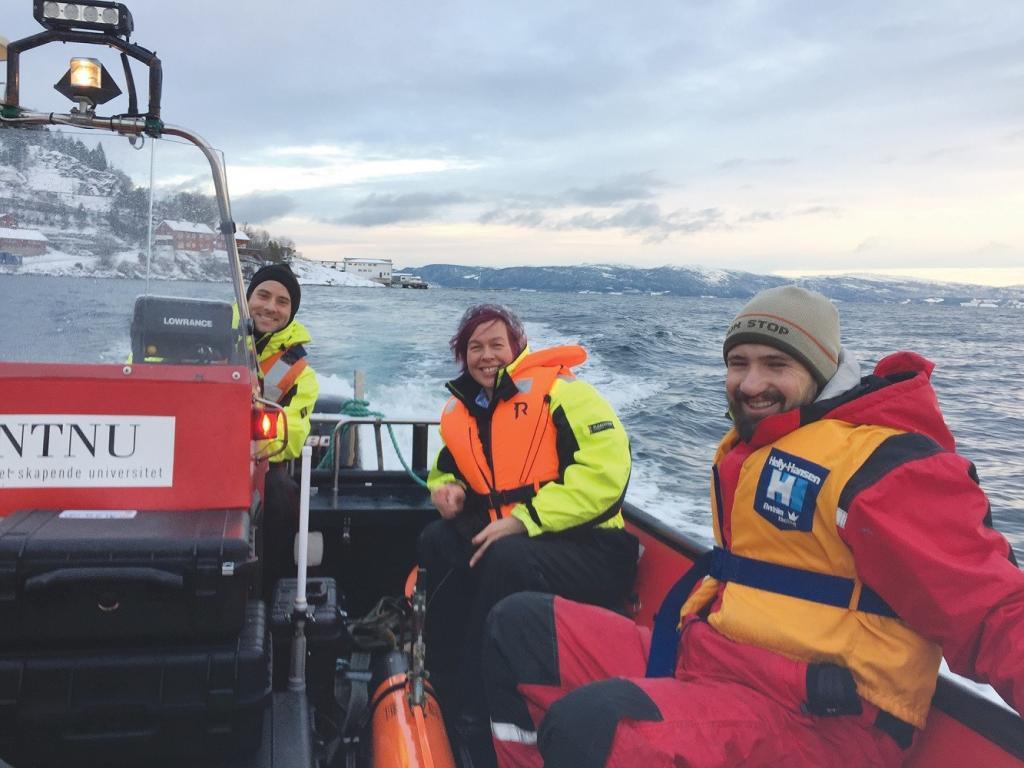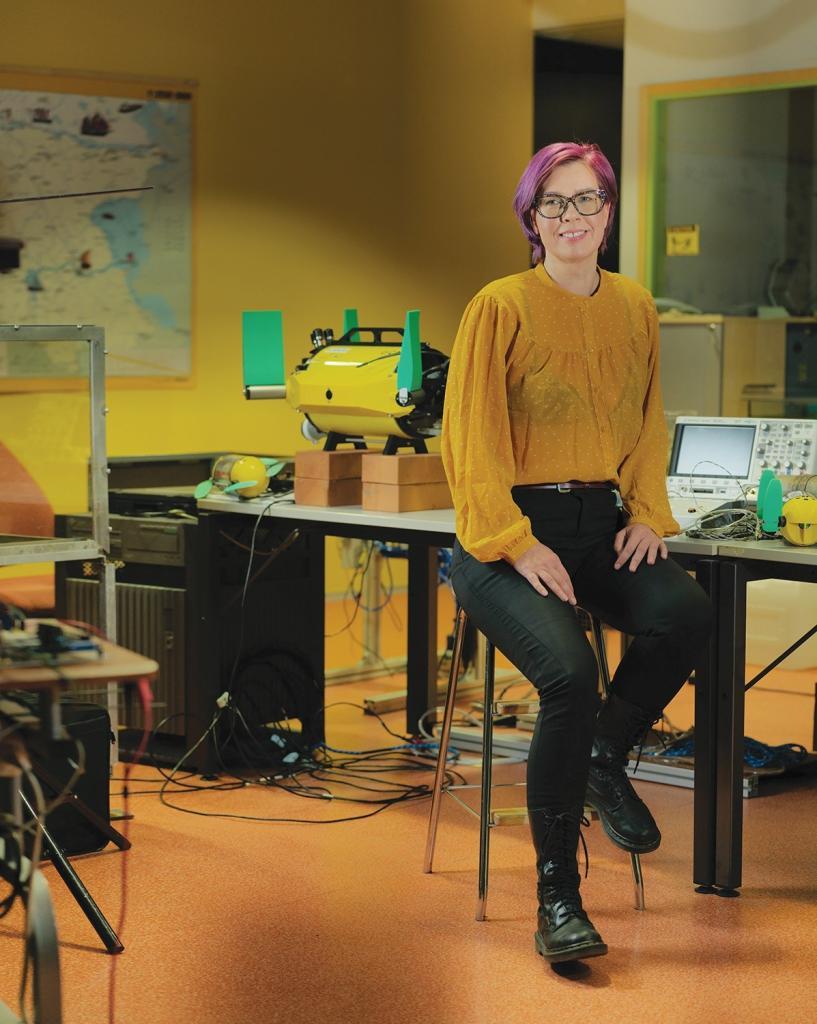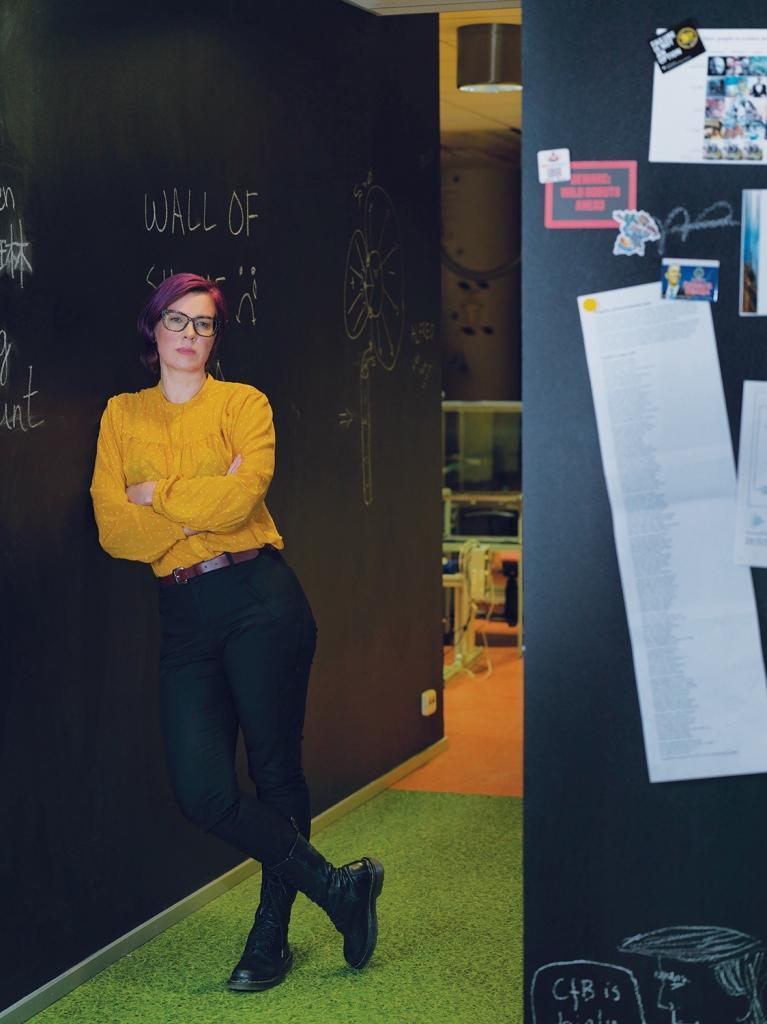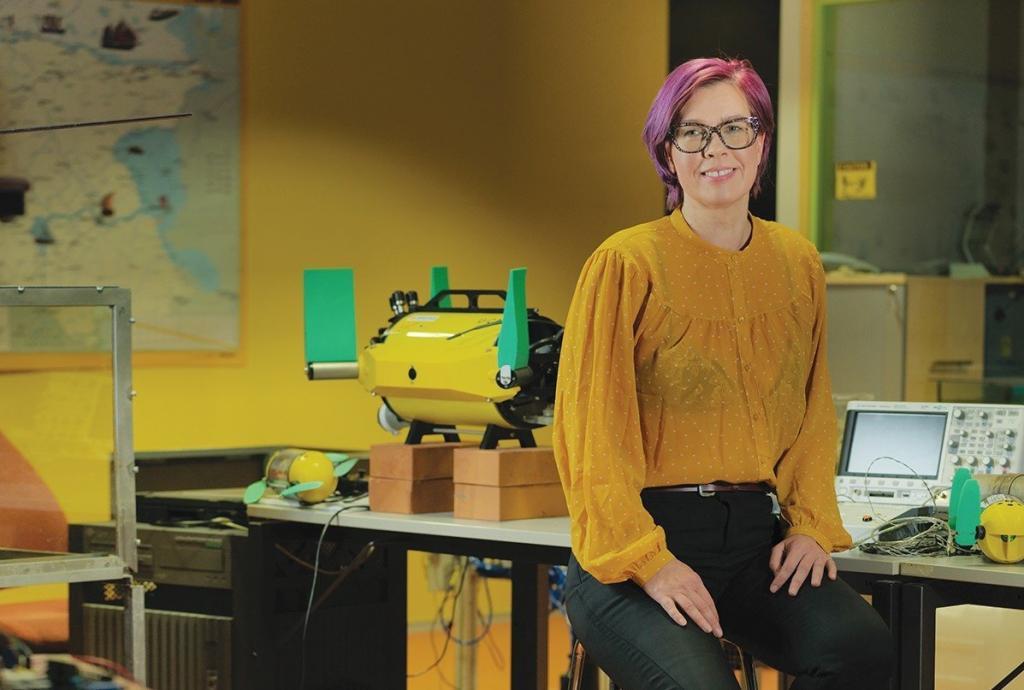Estonian scientist Maarja Kruusmaa founded the Centre of Biorobotics at the Tallinn University of Technology (TalTech) in 2008; in 10 years, the centre has become one of the best known and most acknowledged research centres in Estonia and literally making waves around the world.
The unique niche of Kruusmaa’s research are robots, inspired by fish and marine mammals. The cute robotic fish and a turtle lookalike robot, U-CAT, developed at the centre that currently employs 16 scientists and engineers from 10 countries, are literally making waves. Kruusmaa, with a PhD from Chalmers University in Sweden, spends quite some time of her research life under water, testing the robotic creatures in places from the fjords of Spitzbergen to the streams of Tokyo, often hands-on and wearing a diving suit herself.
“Biorobotics is a cocktail of computer science, automation, signal-analysis, machine learning and physics. We look at nature as a huge patent database – evolution has developed solutions over a long time, and it makes sense to study and copy these designs in robotics,” Kruusmaa says. “Robots work in the same physical environment that animals inhabit, so if the design of animals for certain environments has been optimised, it’s reasonable to search for better solutions for robots following the same patterns. The specific challenge with underwater technology is to build things that work in water – to make electronics fault tolerant in this environment takes specific knowledge.”
The usual underwater technology has been propeller-driven, be it for autonomous or non-autonomous vehicles. This is where Kruusmaa’s approach makes all the difference – instead of noisy and disruptive propellers, her robots move like nature’s own creations. The U-CAT robot which is a turtle-like underwater autonomous vehicle, moves with gentle fin strokes just like a real turtle, the sensors use the technology inspired by the lateral line sensors of fish.
Ensuring maritime safety
In her search for fields of practical use for the knowledge and skills of the biorobotics centre, Kruusmaa has talked to all kinds of people who use underwater technology. “A harbour master, biologist, fisher, archaeologist, an oil and gas specialist and a shipbuilder all have completely different views of what kind of machines they need and how to use our technology,” she says.

The sensors that have been developed, inspired by fish, are now in action in the port of Sillamäe, a town in Ida-Viru County in northern Estonia. “When the pilot guides a vessel into the harbour, he gets lots of information from the port’s weather station, like wind direction and strength, so that he can decide how to direct the vessel to the pier. However, he has no information about currents, which can be strong and unpredictable. The currents in Sillamäe depend on the Narva power station – if the floodgates are open, the amount of water entering the Baltic Sea increases dramatically and ends up whirling in the port’s aquatorium. Nobody knows when the floodgates are opened, so a pilot has no way of taking this into account,” Kruusmaa explains. “We have installed many sensors along the quayside, so now the pilot gets data about wind and water currents and can take all this into account while driving the vessel to the pier. According to worldwide statistics, most marine accidents happen inside the port or upon entry – in terms of marine safety, this is the most dangerous manoeuvre. This is an excellent example for a fish-inspired technology to benefit safety.”
Global adventures
The U-CAT turtle has also had several global adventures from exploring sunken cities in the Mediterranean Sea to mingling with salmon in the Atlantic.
In spring 2018, the U-CAT robot was tested in a fish farm off the Norwegian coast. “We wanted to observe the situation and behaviour of fish in the sea-cages – the huge nets that contain hundreds of thousands of fish. So far, it is very difficult to know how the fish are actually doing inside these cages. Our robot is able to go inside the cage to observe the fish while minimising interference,” Kruusmaa says. “We wanted to find out if the fish are stressed out, if there are parasites, if the fish are fighting – salmon is a species with strong social hierarchies: there is one dominant fish and others who might not get enough food due to their social position. A diver can’t research these issues – the entry of a diver disturbs the fish to such an extent that they are panicking from the observation itself. Our idea was to create a robot the fish would accept. While most researchers in robotics work on interactions of robots and humans, we have focused on robots and fish.”

Back in Estonia, the robot has been exploring an underwater building in the Rummu Quarry near Tallinn. After taking a dive, it explored the building inside out, took photos and videos and, based on these, the scientists created a 3D model of the building.
“The idea is to use the robot in research of underwater objects like shipwrecks instead of a person. It can record a video, return it and this can be used to create a 3D model without the need to enter the wreck,” Kruusmaa notes. “The U-CAT is different from many other underwater autonomous vehicles as it moves with fins instead of propellers. Fins are less invasive, create less noise and turbulence in the water. This is especially useful on the seabed with loose sediment where propellers are of no use – as soon as you switch the propellers on there is no more visibility for the camera.”
The small paddling turtle must be rather smart to complete all the tasks underwater. “Guiding the robots underwater is almost impossible as high frequency signals don’t transmit, so there is no way to transfer lots of information. A video signal doesn’t pass water either, this would only work with a cable but that restricts the movement significantly,” Kruusmaa explains. “Therefore, the robot must manage by itself – be autonomous and rather intelligent. It must be able to process information and make decisions, plan its actions, understand when there is a problem and be able to return to base if needed. So far, our prototype has always returned from a mission.”
Kruusmaa underlines that the robot isa concept vehicle – it’s an open platform for everyone who wants to use the ideas that the TalTech team behind it has developed. “Publicly funded science is here for everyone to use and pick out the achievements that can be developed into products,” she says. “In the case of the sensors, commercial use seems more likely as we have already seen many practical use cases for those – one being the ports, another area of practical benefit are the fish farms. It would be very useful to find out how water is actually flowing through the sea-cages as this determines how much oxygen gets in if the flow of water flushes the parasites and dirt out – all these things have an immediate effect on the wellbeing of fish and as a result on the yield of the farm. It’s in the farmers’ interest that the fish are happy and therefore they are eager to invest in this kind of innovation and technology.”
Robots are becoming a part of our lives
“The last decade has brought about a trend that robots move from the industrial sphere into the daily human environment. Ten years ago, only engineers in the car industry had daily interactions with robots, today even some grandmas have a robot vacuum cleaner at home. This sets completely new requirements for the user-friendliness of robots,” Kruusmaa notes.
“To handle AI, people must agree on what is right and wrong, what is allowed and legal. Technology is developing at a pace that we might lag with shaping the regulations and norms needed, ie there’s a legal lag. Tech is way ahead before we can even make sense of the meaning and impact of these changes. The main point with each technology is that it should not harm people. There is no need for special norms for robots – all safety rules that apply for cars or dishwashers should also apply for robots,” she says.
“As a society, we are not able to adjust to very fast changes. The changes must be managed wisely and carefully. In Estonia, we have already had a big adjustment with the digital government, but I can’t recall anybody complaining that this was somehow difficult. My mother, who is almost 80 years old, uses online voting because she can’t be bothered to walk to the polling station,” the aspiring scientist notes.

Kruusmaa concedes that there is a lot of scaremongering – the robots will take away jobs, we will have to have sex with robots, we will lose our social competence when only interacting with machines, they are dangerous because we might lose control over them and what not.
“We have to consider all aspects. In the case of self-driving cars, for example, the first question is always, ‘whose fault is it when something happens’. But, the technology will ensure that the overall number of accidents will decrease considerably, so to ask, ‘whose fault’ can’t be the main question,” she says. “The main question is how to make sure that fewer people get hurt or killed. 95% of traffic accidents are caused by human errors. When someone gets killed in a car accident on Tallinn-Tartu roadway, nobody suggests banning cars. It’s a question of fault tolerance more widely. In an average family car today, we already have 100 million lines of code. It’s such a complex system and all complex systems have faults.”
Kruusmaa says the question of fault tolerance – enabling a system to continue operating properly in the event of the failure – is so much wider than AI, it applies to all technical systems that are becoming more complex all the time.
“We need to rethink how we build things on a wider scale. We need to design fault-proof systems. Engineers usually think along a path such as ‘let’s build something first and then start testing for faults’, at least this applies for software engineers,” she notes. “This would be quite unimaginable in old engineering disciplines like civil engineering – imagine a house being built and only then checked for faults to make sure it doesn’t fall apart. A simple example – every now and again we receive notifications about software updates to fix bugs. Would you imagine living in a house where the builder shows up regularly to fix a screw or bits of insulation?”
TalTech – a hub for cross-sector science
In her role as Vice Dean for Research at TalTech’s School of Information Technology, Kruusmaa is implementing the cooperation mindset of her own lab on a faculty-wide scale. “We really push for many forms of cooperation within our own faculty to make sure that people don’t stay in their own corners, so that the knowledge can move into the next room, the next hallway, the next floor. One practical scheme to achieve this are the joint supervisors of PhD students. For example, I have a PhD student who is researching the port sensors and my co-supervisor is a researcher of fault tolerance. The idea is to combine the competences and add the knowledge about building fault secure systems, which is very important in this case as it is extremely expensive to repair things underwater.”

Kruusmaa considers state funding for research crucial. “Otherwise, innovation becomes incremental and gets to us only via other countries. Innovation happens in the heads of people moving from the universities to industry. We can’t innovate by simply implementing research from other countries. This would be like trying to cook according to the recipes of top chefs – you can take the same ingredients but, you will not achieve the same result. There’s always unpublished implicit knowledge that cannot be applied by following the descriptions in research publications alone.”
She has been successful in bringing international grants to her centre and is participating in several EU research projects. Kruusmaa considers the European research programmes one of the best schemes to enhance international knowledge exchange. “Estonia has benefitted immensely as all these are based on cooperation and often include industry partners. Estonia has been very successful at participating in these programmes and the important thing here is that it’s not just money that comes into research but more importantly it’s also networks, connections and visibility. Sometimes also a different attitude. This is one of the best things we have gained from the European Union.”
This is a lightly edited version of the article originally published in Life in Estonia magazine. Photos by Atko Januson, except where stated.

